Have you been to Britain’s most-visited art gallery without even noticing?
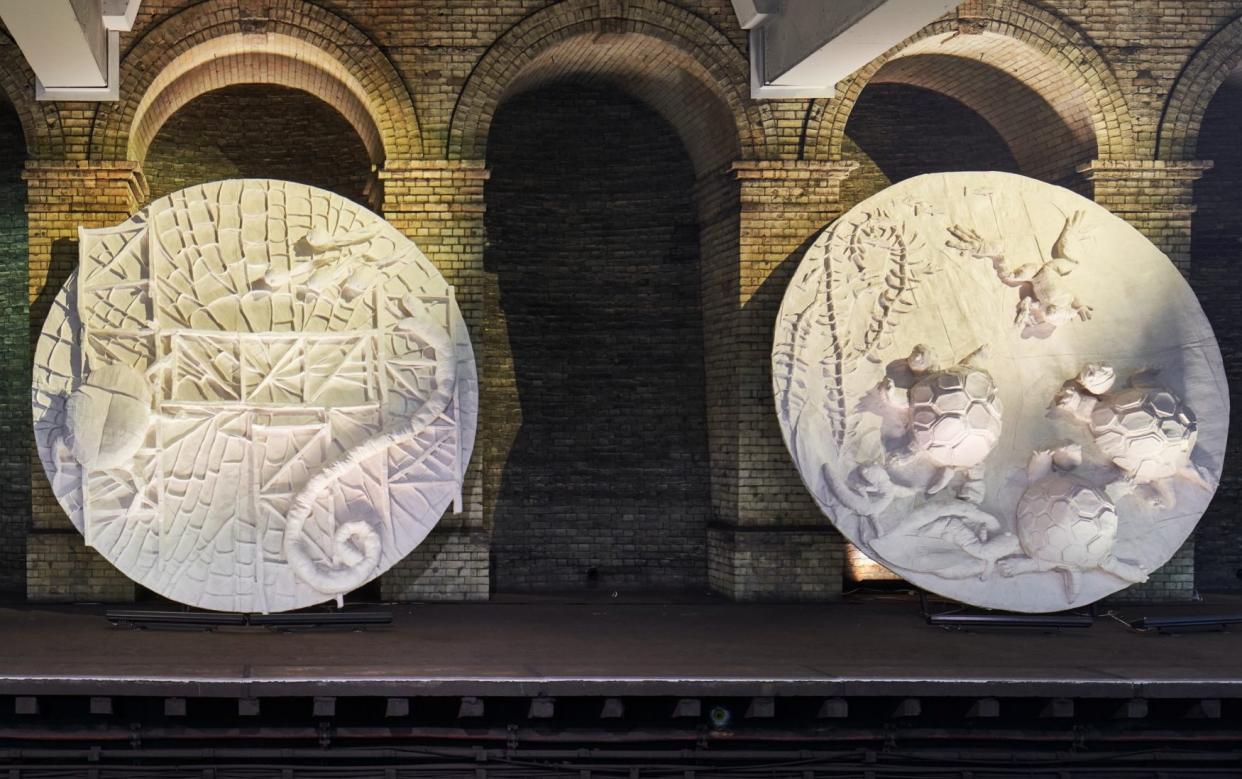
In 2018, Heather Phillipson was in the driving seat – or the driver’s compartment, at least. The artist wanted to make certain that she had travelled into Gloucester Road underground station, on the District and Circle line, on pretty much every part of the train from back to front. She was taking the “wide panorama” afforded to Tube passengers of the station’s disused eastbound platform, and breaking it down into little modules of vision, as she worked out how best to divert eyes from smartphones.
This has always been the peculiar challenge of the Gloucester Road commission. Artists selected for the flagship of Transport for London’s Art on the Underground programme know they’ll have a bigger audience than that of any British gallery or museum.
In 2022, 10 million people tapped in and out of this station, a figure that doesn’t include the uncountable millions more who stream through, travelling into central London, or to Richmond, Wimbledon and Heathrow. But the artists also know that the attention of this audience is, quite literally, a moving target – and one they have only seconds to hit.
Back then, My Name is Lettie Eggsyrub, Phillipson’s colossal sculptural assemblage involving four-metre-high eggs – hard-boiled, or fried, or rotting and emitting cartoon pongs, accompanied by a gigantic whisk – marked a new scope and ambition for the programme. But now, with Art on the Underground in its 23rd year, Phillipson’s work may have met its match. On May 18, Monster Chetwynd’s Pond Life: Albertopolis and the Lily was unveiled: five vast white discs, adorned with curious architectural motifs and salamanders, tortoises and toads crawling across them in high-relief.
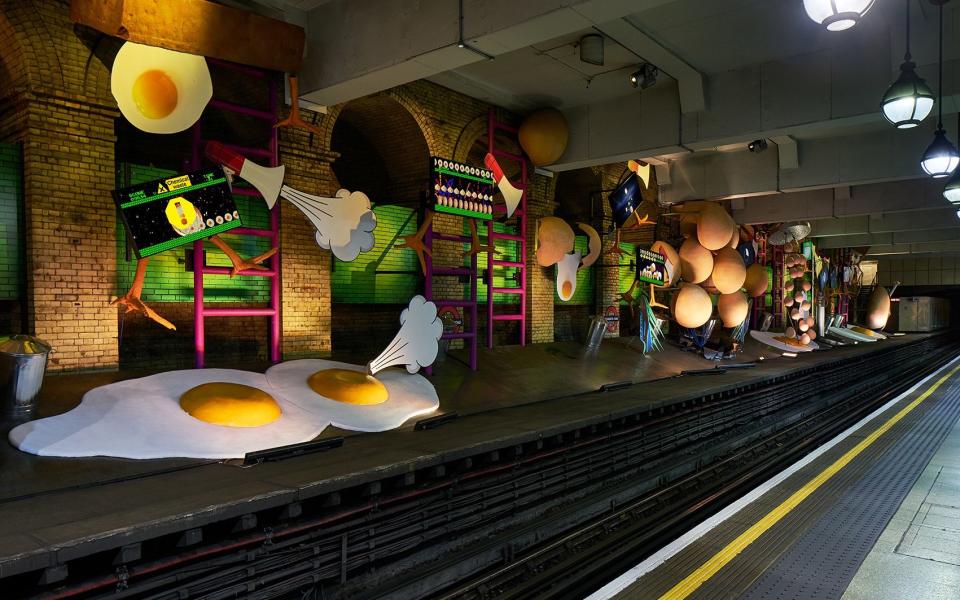
On one level, it’s a complex weaving together of Victorian history – specifically that of Joseph Paxton, the architect of the Crystal Palace who drew his inspiration from an Amazonian giant lily, and the construction of Albertopolis, London’s museum district in South Kensington that now encompasses the Victoria and Albert Museum, the Natural History Museum and the Science Museum, which the station itself was built, in part, to serve.
Chetwynd tells me that she wanted to “lift a lid” on a moment of colonial history, in a way that neither lionises nor excoriates but encourages people simply to dig a little deeper into the past. This material is explained in a short film, starring Chetwynd herself in a luminous pink, sequinned jumpsuit as the “fact-hungry witch”. But on another level, the sculptures themselves are just a great deal of unapologetic fun. At around 5am, Chetwynd danced on the platform in full witch regalia as the sculptures were unveiled, turning more than a few bleary-eyed heads – and bringing to them, she’s pleased to report, expressions of delight.
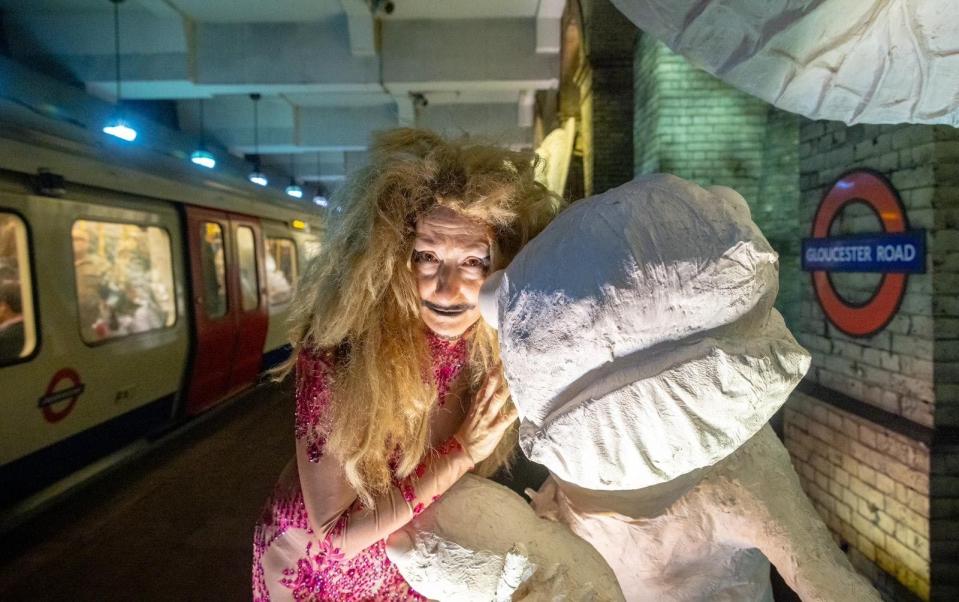
The Underground itself has long exerted a fascination for Chetwynd: “The deep tunnels, the screeching – I want to record it, to revel in it.” As a child, she remembers being bowled over by Eduardo Paolozzi’s mosaics at Tottenham Court Road, installed in 1986 and recently restored. And it’s true that, while London Underground’s dedicated programme (originally called Platform for Art) dates back only to 2000, the relationship between art and the Tube goes back much further.
“Since the early 20th century, art has been at the centre of how London Underground branded itself,” says Eleanor Pinfield, head of Art on the Underground. The celebrated round sign – “probably the most famous corporate branding in the world” – was introduced in 1919; in 1933, Harry Beck’s schematic map was adopted. It’s against such illustrious forebears that the programme today has to measure itself – a point encapsulated by the fact that Chetwynd’s great white medallions are punctuated by red-and-blue “Gloucester Road” roundels on the wall behind.
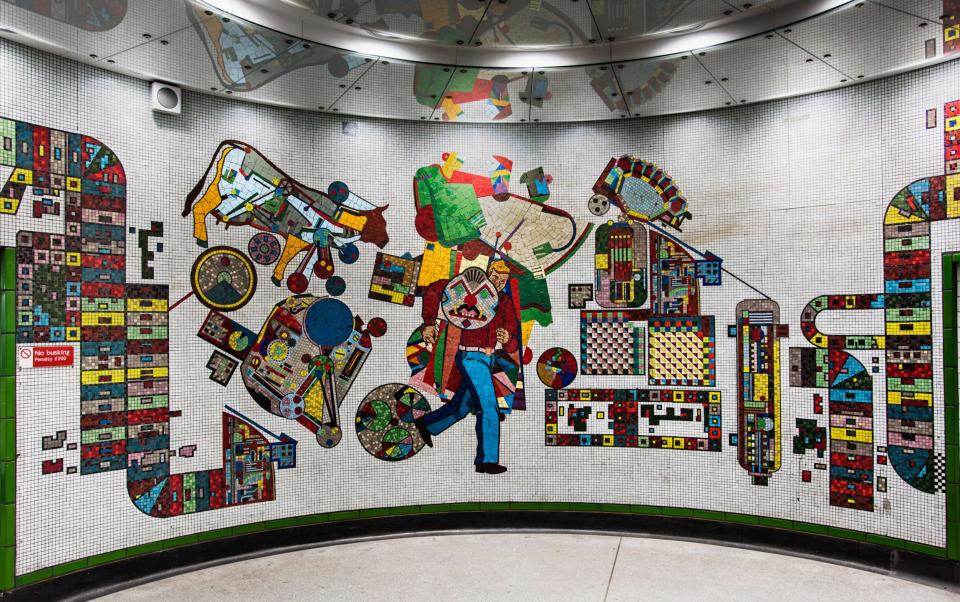
The programme cut its teeth with small-scale projects in the early 2000s, before what Pinfield describes as the first “real marker of intent” at Gloucester Road: a series of billboard-sized self-portraits by Cindy Sherman, produced in partnership with the Serpentine. Later that year came David Shrigley – the first public commission for an artist best known today for the enormous upturned thumb he installed on Trafalgar Square’s Fourth Plinth in 2016. The 10 photographs he produced for Gloucester Road were a series of darkly comic interventions into the mundane – a skull on a cheeseboard; a dark figure in a snowy landscape – itself a neat metaphor for the particular relationship between artwork and audience that the project creates.
Casting his mind back two decades, Shrigley suggests that one of the most interesting aspects of the commission was the idea of placing “an artwork where normally a piece of advertising would be”. Public installations of this nature share, with advertising, an effort to grab attention – but there the similarities end, for where the one wants you to buy, the other, when done rightly, doesn’t really want anything from you at all. People are free, says Shrigley, to “project meaning” onto the work – “you understand that the meaning is never fixed, that every work is a work in progress”. “If anyone deserves a bit of mental respite,” he adds, “it’s a commuter in London.”
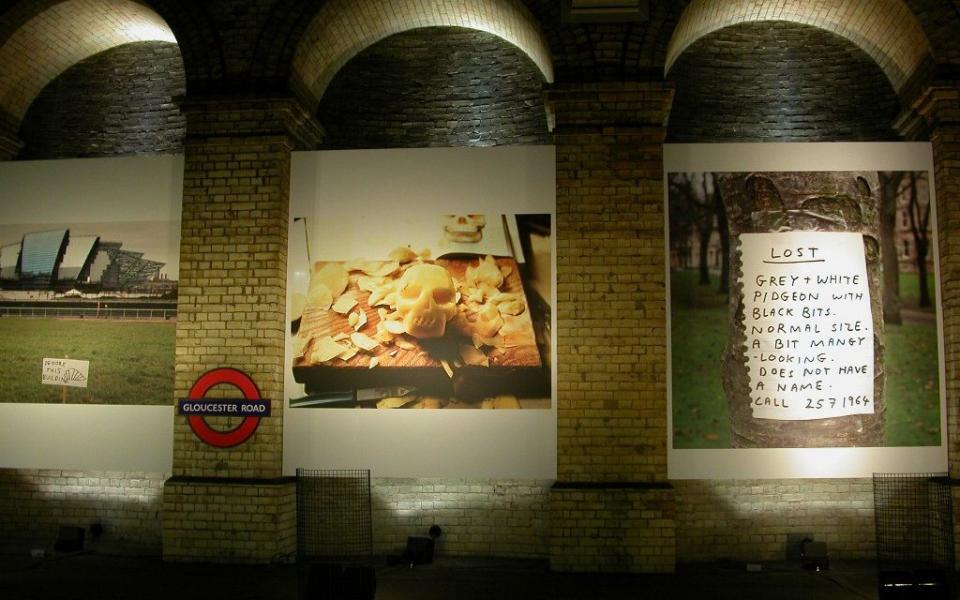
What do the passengers themselves make of it all? At Gloucester Road, one middle-aged man tells me gruffly that the sculptures – purposefully left white, to evoke commemorative coins – look unfinished: “They need painting.” There’s a quietly thrilling comedy, each time the District and Circle line service rumbles in every three minutes or so, in watching the scores of faces stream past, most of them entirely heedless of the lizard invasion that has occurred overnight. But among them are those who, eyes caught by the spotlights, crane their necks for a clearer look, expressions running the gamut from bemusement to glee. On the platform, I can spot a gaggle of young children, excitedly pointing out to one another Chetwynd’s salamander, sporting a giant lily as a parasol.
Pinfield, who measures customer feedback both anecdotally and through surveys, points to a “small group of people who are really opposed” – largely just because “it’s contemporary art” – but it seems that the majority fall between enthusiasm and indifference. Artists are bound by a few rules: “We can’t have offensive language, we can’t have nudity, political statements which are specifically linked to political parties.” And on the technical side of things, there are a host of safety requirements – from fire regulations to making sure not to distract the driver. But beyond this, the artists – who have also included Mark Wallinger, David Batchelor, Brian Griffiths and Trevor Paglen – are given carte blanche to use the platform as they wish.
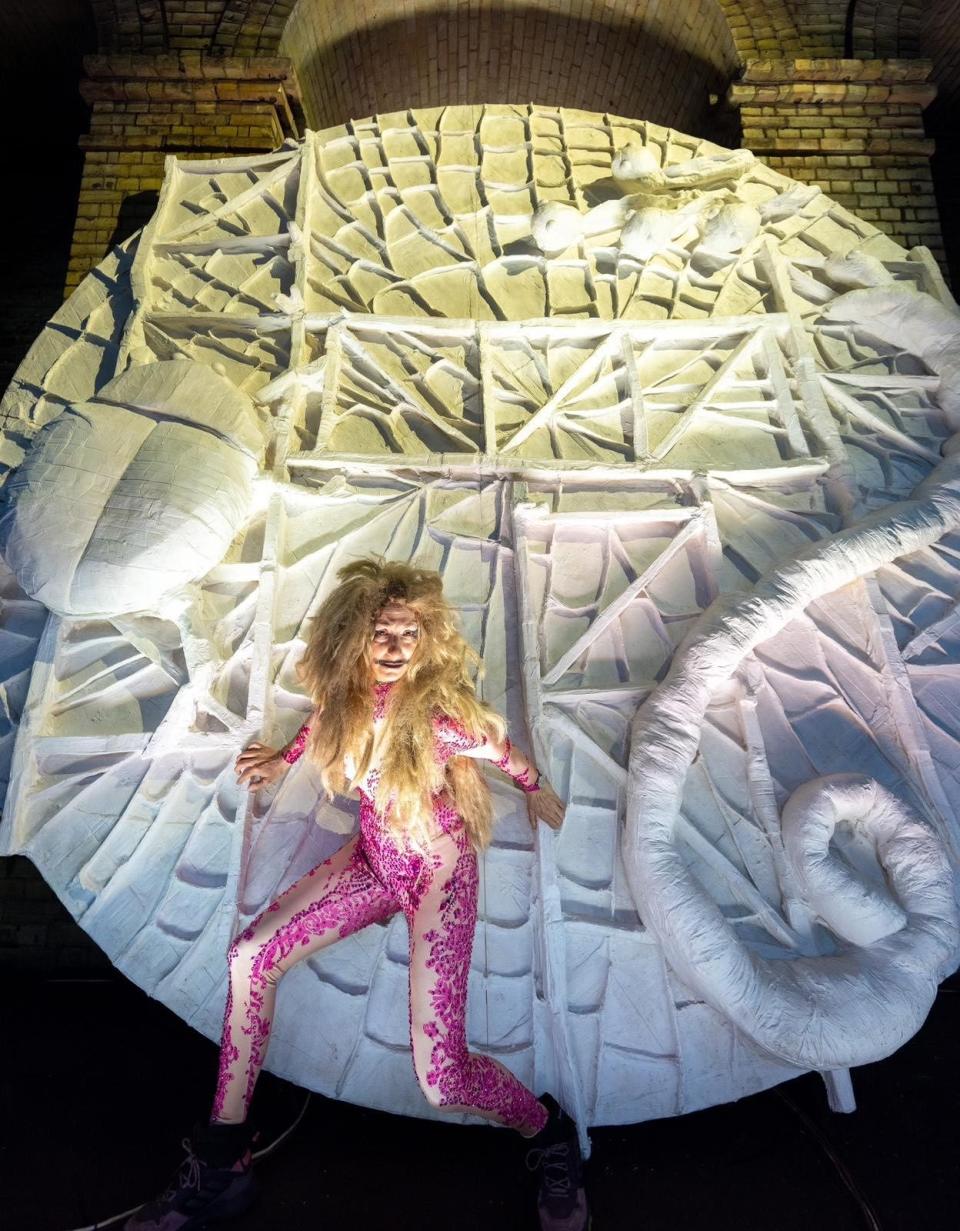
Gloucester Road is the largest, but it’s by no means the only part of TfL’s programme, which spans the entire network. When I first moved down to London in 2018, a sideshow to My Name is Lettie Eggsyrub ran the length of the escalator at Bethnal Green station, which, when I was running late, I’d be forced to descend to brave the scrum of the Central Line. “Oh mother, it’s that time of day when I realise I’m an animal,” Phillipson’s short narrative began – words that would replay in my head until I made it to the office. For Phillipson, it’s encounters like these – making “people do a double take” – that make Art on the Underground “one of the most exciting programmes in the country, increasing the capacity to reach audiences that have no engagement with art.”
Pond Life: Albertopolis and the Lily will be at Gloucester Road station until May 2024. For more information about Art on the Underground: art.tfl.gov.uk


